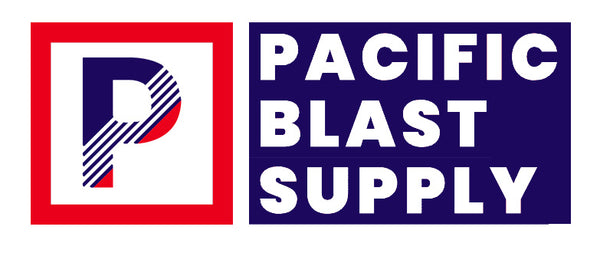A successful coating job—whether it's paint, epoxy, or a protective seal—is only as good as the surface beneath it. Skimping on preparation is the number one reason coatings fail prematurely. Fortunately, abrasive blasting is a highly efficient and effective way to ensure your surface is perfectly prepped, maximizing the lifespan and appearance of your finish.
Here at PacBlastSupply.com, we specialize in providing the media and supplies you need for a professional surface prep job. Here is your essential guide to prepping surfaces for coatings using abrasive blasting.
Why Abrasive Blasting is Essential for Coatings
When you apply a coating over an unclean or smooth surface, you're setting it up for failure. Contaminants like rust, old paint, mill scale, or grease will block adhesion, leading to peeling, flaking, and corrosion.
Abrasive blasting solves this problem in two critical ways:
- Cleaning: It strips away all existing contaminants down to the bare substrate, achieving a level of cleanliness difficult to match with manual or chemical methods.
- Profiling (Creating an Anchor Pattern): The blasting process creates a microscopic roughness, or anchor pattern, on the surface. This mechanical profile allows the coating to physically "grab" and bond securely, which is crucial for long-term adhesion and performance.
Step 1: Assess the Surface and Coating Needs
Before you pull the trigger, you need a plan. The ideal blast media and technique depend on two factors: the substrate you're cleaning and the coating you plan to apply.
1. Know Your Substrate
- Steel/Iron: Generally requires an aggressive media to remove heavy rust and mill scale, like Steel Grit or our popular Black Beauty® Iron Blast Abrasive.
- Aluminum/Softer Metals: Requires a gentler touch to avoid warping or damaging the substrate. Glass Bead or Aluminum Oxide (with a finer grit) are often preferred.
- Wood/Fiberglass/Delicate Surfaces: Requires the least aggressive media. Walnut Shell Blast Media or Soda Blast Media are biodegradable and excellent for stripping paint without damaging the underlying material.
2. Determine the Anchor Profile
Different coatings require different levels of surface roughness, measured in mils. A heavy, high-build epoxy coating will require a coarser, more angular profile (created by media like steel grit or crushed glass), while a thin-film paint might require a less aggressive, smoother profile (created by a finer grade or spherical media like glass beads).
Step 2: Select the Right Abrasive Media
Selecting the correct media is the core of surface preparation. Using the wrong media can damage the part or provide an inadequate profile.
Need a recommendation? Don't guess! We offer a variety of media sizes and types—contact the PacBlastSupply.com team, and we can help match the perfect abrasive to your job.
Step 3: The Blasting Process
With the right equipment and media, the blasting process involves a few key stages:
- Pre-Cleaning: Remove heavy grease, oil, and visible contaminants with a solvent-based degreaser. The blast media is designed to remove rust and scale, not heavy oil.
- Blasting: Blast the surface systematically, maintaining the correct pressure and nozzle distance for your chosen media. Aim for a consistent, uniform clean.
- Achieving the Cleanliness Standard: The goal is to meet an industry standard, most commonly SSPC or ISO 8501 standards (e.g., White Metal Clean (SSPC-SP 5 / Sa 3) for critical applications).
- Final Inspection: Use a comparator gauge to verify the anchor pattern meets the specifications of your coating.
Step 4: Post-Blast Clean-Up
The job isn't done when the blasting stops. The newly cleaned surface is highly reactive and susceptible to "flash rust" (rapid oxidation) and contamination from dust.
- Remove Residual Abrasive: Blow the surface clean with filtered compressed air to remove all dust and residual abrasive particles.
- Inhibit Flash Rust (for Wet Blasting): If you are using wet vapor blasting, immediately treat the surface with a Wet Vapor Blast Rust Inhibitor like the VF-RI8B to protect the bare metal until the coating is applied.
- Coat Immediately: For all bare metal surfaces, it is crucial to apply the primer or first coat of the protective system as soon as possible after cleaning to prevent rust and maintain the optimal profile.
Ready to Start Your Next Project?
Proper surface preparation is not a shortcut—it’s an investment in the longevity of your work. By following these steps and choosing the right abrasives from Pacific Blast Supply, you ensure your final coating will adhere better, last longer, and perform exactly as intended.
Browse our full selection of Abrasives and Supplies today to get started!

